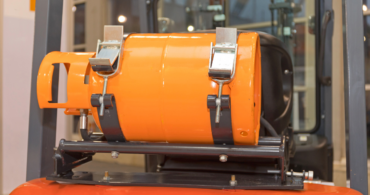Anyone operating a disorganized warehouse might as well toss buckets of cash out the window. Every misstep and misplaced inventory causes delays, and delays impact the bottom line. Streamlining receiving, storing and shipping processes is essential to a warehouse’s success. Shaving just a few seconds from a routine task can have a dramatic impact on efficiency. Improving your warehouse organization means less wasted time and a more profitable business.
Finding the best warehouse organization layout for your business’s needs can drastically reduce the travel time through the building, improving efficiency and workflow.
Warehouse layouts
Historically, organizations have utilized one of three warehouse layouts:
- U-shaped layout: A U-shaped design has receiving docks at one end of the U and the dispatch area at the other. Inventory is stored in the middle. The streamlined flow of a U-shaped design works for most warehouses and having the receiving and dispatch departments essentially side-by-side facilitates easy communication between those areas.
- I-shaped layout: An I-shaped design places the receiving and dispatch areas on opposite ends of the building. This layout is also known as a “through-flow warehouse” because it’s a straight shot from receiving, through storage and, finally, to dispatch.
- L-shaped layout: In an L-shaped design, receiving and dispatch are separated by a 90-degree angle. The L-shaped design is also considered a “through-flow” warehouse because inventory must travel the length of the building before reaching shipping.
The above layouts all have storage shelves that are positioned in parallel rows. However, two relatively new layouts attempt to minimize travel time by adding an aisle that bisects these rows—with a unique twist.
Flying-V layout
A flying-V layout takes a simple concept, adding a middle aisle, and modifies it into a curved V-shape. Picture a row of 12 equally long storage shelves. For a flying-V layout, the shelves on the ends, furthest from each other, are divided in half—except at a slight angle, so that the shelf facing in is slightly longer than the outer-facing shelf. The subsequent shelves follow this curve so the upper portion is longer than the lower portion until the curve meets at the middle shelves.
The intent of the flying-V layout is to minimize travel time. According to a Science Direct study, a flying-V design can reduce travel by approximately three to six percent, which can lead to many more shipments leaving the warehouse during a workday.
Fishbone layout
This layout gets its name because, when viewed from above, it resembles the shape of a fish skeleton. Picture the V-layout described above, except there is no lower portion to the aisles—they stop at the break, forming an inverted pyramid. Branching off from these main aisles are multiple cross-aisles (these cross-aisles are where the fishbone layout gets its name because they resemble the ribs of a fishbone). Warehouse workers can move quickly between the main aisles and sections of the warehouse using these cross-aisles.
Like a flying-V design, one of the most significant benefits of the fishbone layout is that it minimizes travel time through the warehouse by cleverly utilizing both horizontal and vertical space. By organizing storage racks along the cross-aisles, the design maximizes the warehouse floor space while maintaining clear, unobstructed pathways.
Warehouse organization ideas
While every warehouse is different, there are a few crucial warehouse ideas that can bring order to a messy warehouse.
Maximize vertical space
Every warehouse and distribution center, regardless of size, struggles with its available floor space. The possibilities for expanding out are severely limited. It’s the number one reason that warehouses have high walls, so they can expand up. However, the needs of a facility change over time, and it can outgrow its current shelving solution. Plus, innovations may make your current shelving solution obsolete, which puts you at a competitive disadvantage. It is essential to periodically review your shelving and pallet racking systems to spot inefficiencies and potentially discover opportunities to dramatically increase storage.
Implement a warehouse management system (or review your current one)
A warehouse inventory management system helps track stock in real time and streamline the picking, packing and shipping processes. These systems work with barcode scanners to dramatically lower manual errors and improve inventory tracking. Workers can quickly locate items, which reduces the time spent searching for products, and because data entry is automated, manual errors are lowered dramatically.
Standardize labeling systems
One of the easiest ways to improve warehouse organization is by using a standardized labeling system. Each item and storage location should be clearly labeled with easy-to-read signs or, even better, barcodes that work with an inventory management system. This makes it easier for warehouse staff to locate and pick items, reducing mistakes and increasing speed. Any warehouse without a standardized labeling system will see a dramatic improvement by implementing one.
Adopt a storage strategy
Not all products move at the same speed, and warehouses can benefit from organizing items based on demand.
- ABC storage strategy: ABC storage organizes inventory based on an item’s importance by assigning them classes, either A, B or C. The most important inventory gets the class A slot. Only about 20% of the inventory is class A. Class B is slightly larger since these are valuable, just not as valuable as class A. Class C is the largest group (about 50% of the inventory), which is also the least valuable inventory. Since A items are the most frequently picked products, they are stored closest to the picking and packing areas. The C items are in the least demand and stored further away.
- First-in, first-out: There’s no mystery behind the first-in, first-out storage strategy. Everything you need to know is in the name: the oldest product in storage is the first that’s shipped out of the warehouse. First-in, first-out is often used for perishable inventory. It also helps businesses determine the cost of their inventory because the cost is calculated in the same order a business purchased inventory. For example, if a business purchased 300 gizmos for $20 and 200 more for $30, then sold 400 of them, an accountant would calculate 300 at $20 and 100 at $30.
- Zone picking: For zone picking, order pickers are assigned to a specific area of the warehouse and only grab products from their assigned zones. This method helps reduce employee travel time and congestion while improving productivity. When implemented in large warehouses with various products, zone picking can significantly improve efficiency.
Small warehouse organization
In a small warehouse, where space is at a premium, maximizing every square foot is essential. Without careful planning, it’s easy for small warehouses to become overcrowded, disorganized and challenging to navigate. Here are a few warehouse setup ideas to help streamline your small space.
Stackable storage bins
When storing smaller items in a smaller area, stackable bins help utilize vertical space. These storage containers come in a variety of sizes and colors (color coding can help with easy identification). Stackable bins allow you to store more items without taking up additional floor space.
Mobile compact shelving solutions
For a small warehouse, mobile compact shelving units are one of the most effective warehouse storage ideas. These shelves can be moved to create aisles only when needed, helping to save valuable floor space.
Cross-docking
Cross-docking is when products are unloaded from incoming trucks and immediately reloaded onto outgoing trucks without being stored. This minimizes the amount of storage space needed and helps keep the warehouse organized.
Focus on accessibility
In a small warehouse, everything must be easily accessible. Frequently accessed items should be stored in locations that are quick and easy to reach, while rarely accessed items can be stored higher up or further away.
Whether you’re struggling to organize a small or large warehouse, Texas Motive Solutions can help streamline or operation by keeping your industrial vehicles operating at peak efficiency. Give us a call at (888) 316-2459 or fill out this form to learn about our complimentary forklift fleet performance analysis and our top-of-the-line forklift batteries and accessories.



